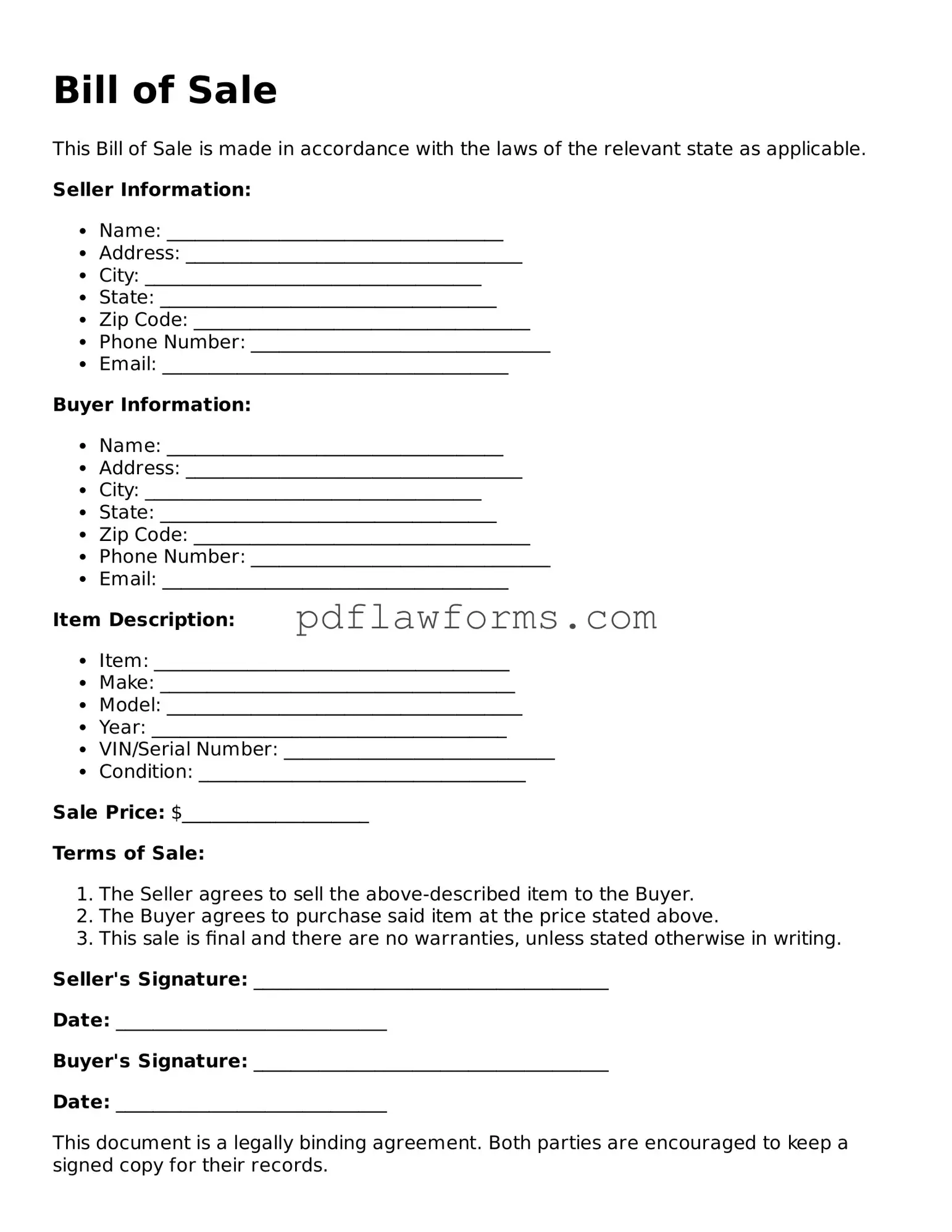When completing a Bill of Sale form, individuals often overlook critical details that can lead to complications. One common mistake is failing to provide accurate descriptions of the item being sold. A vague description can cause confusion or disputes later. For instance, simply stating "car" instead of including the make, model, year, and VIN can lead to misunderstandings.
Another frequent error is neglecting to include the purchase price. The Bill of Sale serves as a legal record of the transaction. Omitting this information can create issues for both the buyer and seller, especially if questions arise regarding the transaction's legitimacy or value.
Many people also forget to include the date of the transaction. This detail is crucial, as it establishes when the ownership of the item transferred. Without a date, it can be challenging to prove when the sale occurred, which can complicate matters if disputes arise later.
In addition, signatures are essential. Some individuals may assume that a verbal agreement suffices, but without signatures from both parties, the document lacks legal weight. Failing to sign the Bill of Sale can render it ineffective, leaving both parties vulnerable.
Another mistake is not keeping a copy of the completed Bill of Sale. Once the transaction is finalized, both parties should retain a copy for their records. This document serves as proof of the sale and can be vital if any issues arise in the future.
Lastly, individuals sometimes forget to check for any state-specific requirements. Each state may have different laws regarding Bill of Sale forms. Ignoring these requirements can lead to legal issues down the line. Researching and ensuring compliance with local regulations is essential for a smooth transaction.
